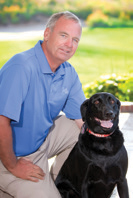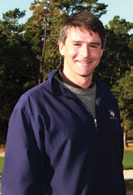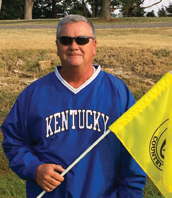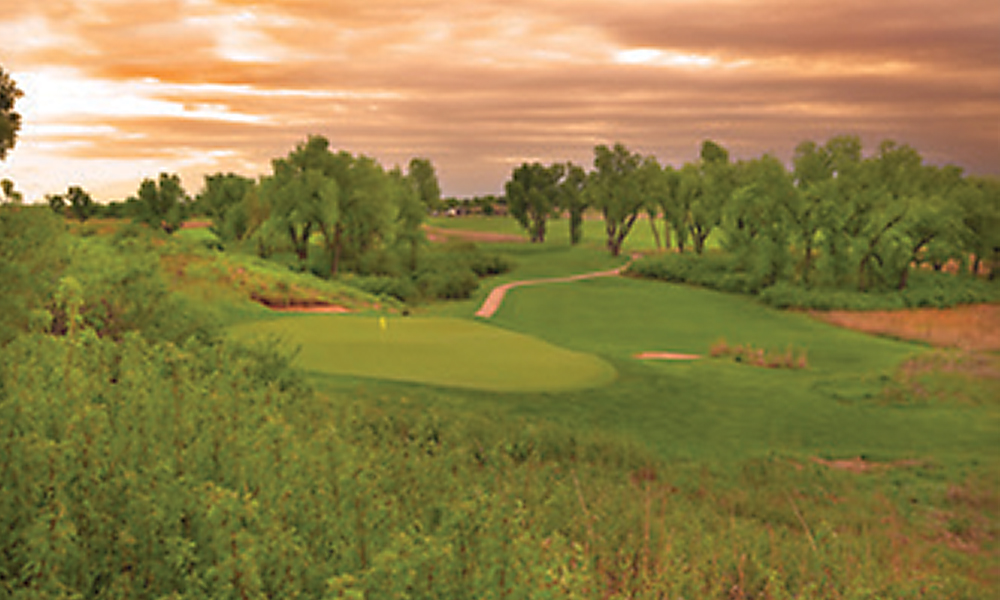Where did your summer go?
As golf courses across the U.S. prepare for summer to slip into autumn, the editorial team at Golf Course Trades wanted to examine a few of the issues Superintendents face during this transitional time of year.
We contacted three Superintendents at golf courses that differ greatly from one another and asked about the seed or sod challenges confronting them as fall approaches. Armed with their questions, we then consulted two of the many specialists within the golf industry for their advice and solutions.
Three Very Distinctive Golf Courses
Each of the three courses represented in this article are uniquely different from one another, with distinctive weather, course design, soil, topography and rounds of golf played.

Prairie Dunes Country Club is a Perry Maxwell designed, links style, 18-hole championship golf course tucked in the rolling hill country of Hutchinson, Kansas. This challenging course has hosted the U.S. Senior Open, the U.S. Women’s Open, the Curtis Cup Match and multiple prestigious amateur events. In 2014, Prairie Dunes was the site of the Men’s NCAA Golf Championship. Hutchinson, Kansas is just north of Wichita and is 173 miles south of Lebanon, Kansas, the geographic dead center of the United States.
Prairie Dunes’ Golf Course Superintendent, Jim Campbell, a central Kansas native, helped run the family farm for about 25 years. In the mid-1990s, he decided to leave farming and follow his love for golf. He traveled to Texas and attended Texas State Technical College while continuing to farm.
Jim’s internship was at Prairie Dunes in 1996, and after completing college, he was accepted in an assistance position at Prairie Dunes. In 2001, Jim was promoted to Associate Superintendent and now is the Superintendent at Prairie Dunes.
He has a great love for the native, grass-covered sand dunes and the gentle roll of the Perry Maxwell designed greens and fairways.

Poppy Hills Golf Course is a Pebble Beach, California, course constructed and owned by the Northern California Golf Association. Originally designed by Robert Trent Jones Jr. and redesigned in 2013 by Jones and his Robert Trent Jones II design firm, this rugged and wooded course was co-host to the PGA Tour Pebble Beach Pro-Am from 1991 through 2009. Poppy Hills has also hosted the Spalding Pebble Beach Invitational, the 1991 NCAA Men’s Championship and this year, the Champions Tour First Tee Open. (Read more on Poppy Hills’ recent redesign in the July issue of The Golf Course Trades). Located on the Monterrey Peninsula, Poppy Hills deals with frequent morning fog and periods of heavy rain.
Related: Eye-popping! Poppy Hills Transforms Into Faster, Firmer, More Strategic Golf Course
Matthew Muhlenbruch is Golf Course Superintendent at Poppy Hills. Earning a BS in Turfgrass Science from Penn State in 2002 and an Executive MBA from San Francisco State University, Matt has been Superintendent at Poppy Hills since 2013. For seven years, he was the Golf Course Superintendent at The Olympic Club in San Francisco and has been an Assistant Superintendent at The California Golf Club (San Francisco) and Cattail Creek Country club (Glenwood, MD).
Related: Olympic Club First Golf Club redefines what it means to be a Top 100 Club
Matt considers his strengths to include his ability to manage and motivate large crews and to make sound decisions quickly, as is so often required of a Golf Course Superintendent.

Greenville Country Club is a private 9-hole course in the small town of Greenville, Kentucky. Built in 1923, this course is believed to be the third oldest course in the state and is home to approximately 140 club members. Like many smaller courses across the country, Greenville Country Club deals with the same problems faced by larger courses, but is challenged to solve them with a smaller budget. Located in Kentucky’s Western Coal Fields region, Greenville averages 48 inches of rain each year, 10 inches above the national average.
Greg Newman is the Superintendent at The Greenville Country Club Golf Course. Newman says that at the time he graduated high school, his hope was to follow in his father’s footsteps into the coal mining industry. At that time, the county in which Greenville is located held the record for producing the most coal per capita of any area in the world. Graduating with a degree in Mining Engineering from Madisonville Community College, Greg began work as an underground coal miner, but coal was on the cusp as a declining industry and before long, he had started his own business installing security systems. Called to install an alarm at a golf course, Greg was asked to stay and complete another task and then another. Weeks passed with Greg working on each project, and by the time all three tasks were completed, the golf course had offered him fulltime employment.
Twenty years later, Greg is still in the golf industry, now at the Greenville Country Club as Course Superintendent. He compares the job to the often-quoted line from Forrest Gump, “Life is like a box of chocolates. You never know what you’re going to get.” Greg says, “Life is like being a Golf Superintendent; you never know who may show up, what disease may come and what may fail. The good thing is, I love chocolate and I love being a ’Keeper of the Greens.’”
Three Tough Questions
Although their courses are different in many ways, Jim, Matt and Greg share the same responsibilities: managing labor, time, materials and the budget to keep their golf course at its optimum level for both daily use and long-term sustainability. Each Superintendent provided us one tough question. To answer their questions, we turned to Regional Sales Manager at La Crosse Seed, Rob Vanscoy and Steve Christian, Sales Consultant for Dakota Peat & Equipment and Dakota Analytical, Inc.
Q. Jim Campbell, Superintendent Prairie Dunes Country Club: Please share insights on selectively eradicating Poa trivialis.
A. Rob Vanscoy, Regional Sales Manager La Crosse Seed: Poa trivialis (rough stalk bluegrass) is a perennial, grassy weed plant. Poa trivialis is extremely aggressive and will outgrow preferred turf varieties in the spring and fall. It is extremely sensitive to heat, drought and disease activity. During the summer months, this plant may actually go dormant. In the early fall it will re-establish itself from the crown and the stolon. This plant will do very well in shady and wet areas.
Eradicating this plant can prove to be difficult and time consuming. The desired turf may also play an important role in controlling Poa trivialis. Minimizing moisture and reducing the shaded areas will help in controlling this plant. There are herbicide controls available to help minimize the infestation or spreading of this plant. Applying Tenacity in August through September will help reduce populations. Summer weed control applications of Sulfosulfuron when the plant is entering into the stress period will also help in the control. Be sure to over seed the infected areas to provide competition from the desired turf. The thicker you can make your turf stand, the easier it will be to maintain control of Poa trivialis.
A. Steve Christian, Sales Consultant, Dakota Peat & Equipment and Dakota Analytical, Inc.: While chemical treatments to eradicate Poa trivialis can be tools to limit its existence, one should also look at the growing environment that favors its encroachment. While Bentgrass can be encouraged to root, poa is a shallow rooting plant. Practices that encourage such growth should be minimized. The problem is with today’s cultural practices this may be tough to do.
It very important to understand a couple of soil structure issues we have developed over the past couple of decades. We have been encouraged to topdress with straight sand to bury the organic debris. The term organic debris is not used in golf agronomic circles and has instead been called organic matter. By terming it organic matter, it has lead us down this straight sand epidemics; a golf green with very little to no true humic structure. An organic material is not true organic matter until it is decayed to a stable form of humus. Before this point, it is still just organic debris.
When managing organic debris with today’s standard practices, the Superintendent is left managing a sandbox, void of any good soil structure and retention below the one to two inch level. You are now being managed by the top two inches of the rootzone, leading to shallow rooting and the endless battle with poa.
Going back to Soil Science 101, the Superintendent can turn this around by employing a soil structure strategy to encourage healthy bentgrass while being able to discourage the growth of poa.
Most greens have under 0.5 % organic content below the 2-inch level in the green. Increasing the greens organic content in this zone to the 1.0 to 1.5% range will give you the needed nutrient storage and water relationship. This can be done through deep tine aerification and filling holes with a mix with at least 1% true organic matter content. Minimal light watering will be needed to discourage poa growth and the development of healthier, stronger bentgrass. The best part of this is you have just gained some stress relief for both you and the turf.
The only danger of such a program is using the wrong organic material to achieve the goals. If you use a young, unstable organic material, such as sphagnum peat or other generic organics, you will be adding to your organic debris issues. If you use commercial compost with high mineral content and low organic content, you could have layering issues over time. You must use a material with high organic content, greater than 85%, and it must be highly decomposed and stable, like DAKOTA Peat. This type of organic material is rare but over time can help build a system that can lead to the cultural practices to encourage bentgrass and discourage poa.
Q. Matt Muhlenbruch, Superintendent Poppy Hills Golf Course: What are different fall season strategies to control poa annua in new bentgrass greens?
A. Rob Vanscoy, Regional Sales Manager La Crosse Seed: Poa annua, (annual meadow grass, annual bluegrass, or poa), is a widespread low-growing turf grass in temperate climates. Poa annua is an annual weed that is commonly found in turf. It is rather difficult to control because the plant will produce several hundred seeds in one season and the seeds can lie dormant for several years before sprouting.
Controlling poa annua will take patience. Applying a pre-emergent several times between September and November and again early spring will help prevent the germination of any new plants. Keep in mind, these seeds can lie dormant for several years, so this will have to become more of a maintenance routine than a one-time ordeal.
Sulfosulfuron and metsulfuron may control young annual bluegrass plants but do not control mature populations. Tenacity can help in the control of this plant at any time during the season (keep in mind, Tenacity also controls bentgrass).
By changing your watering and fertilizing routine, you can also help reduce infestations. Deep and infrequent irrigation along with proper aeration will help promote desirable turf and may choke out the poa. Lowering nitrogen applications during the peak poa growing season will also help deter the spread of the plant. Constant over seeding is required to help thicken the desired turf to choke out and reduce the population of poa.
A. Steve Christian, Sales Consultant, Dakota Peat & Equipment and Dakota Analytical, Inc.: Fall is a great time to start controlling poa annua on bentgrass. New greens, especially if built to USGA recommendation, can really be an aid in controlling poa.
Cooler temperatures give bentgrass a time to thrive. Using the suspended water in the green as an aid to keep the upper level to the dry side will encourage deeper rooting of bentgrass and discourage the poa from encroaching.
Even though the greens are new, stay on a good soil structure program. It is surprising how quickly new greens can become a sterile environment with today’s practices.
Q. Greg Newman, Course Superintendent Greenville Country Club: What the best procedure to deal with thatch?
A. Rob Vanscoy, Regional Sales Manager La Crosse Seed: Thatch is a spongy layer of mostly dead plant material at the top of the soil. It’s not primarily a buildup of grass clippings as many people believe. In fact, thatch occurs when organic matter is produced faster than it can decompose. Earthworms and microbes in the soil help break down thatch. An imbalance of these insects will cause the plant material to remain longer than normal, creating a layer of thatch that will continue to get thicker.
Several factors determine the rate of thatch development by effecting how fast organic matter is produced or by affecting its rate of decomposition. Over fertilizing and over watering cause the turf to grow faster than the organic material in the lawn can break it down. Acidic soils, poor soil aeration practices, poorly drained soils and excessive use of pesticides also contribute in reducing microorganisms used to break down plant material naturally.
To control thatch, you must change your habits. Water longer on at less frequent intervals to allow the grass plant to develop a stronger root system. Fertilize your lawn with less nitrogen. Only apply pesticides as needed. And be sure to aerate the soil frequently. If thatch is excessive, you may consider de-thatching the lawn. Keep in mind that de-thatching will also destroy healthy plants in the process (over-seeding will be required to rebuild a thick turf).
A. Steve Christian, Sales Consultant, Dakota Peat & Equipment and Dakota Analytical, Inc.: First, let’s make sure we understand we are not dealing with true organic matter but really organic debris. It’s hydrophobic, has a terrible low pH and ties up needed nutrients in the top level of the greens. Thatch management with today’s practices encourages more thatch and more thatch and more thatch.
By straight sand topdressing, the bottom level of the green becomes more sterile over time with little nutrient storage compared to the top one inch of the green. This encourages the turf to concentrate growth in the top inch layer causing excessive thatch. By using a high-quality organic mix when topdressing with 1.0 to 1.3% organic content by weight, you will keep the nutrient storage and water relationship at a level necessary now that growth is encouraged below the one to two inch level in the green. Healthy biological activity is also enhanced, helping break down some of the unwanted organic debris.
Thatch management will never end, but we can lessen the impact through improving and maintaining proper soil structure below the two-inch level of the rootzone.
If you found these questions and answers helpful, please let us know. We’d love to cover more topics like these. The Golf Course Trades would like to thank our three Superintendents, Jim, Matt and Greg.
We’d also like especially to thank Rob Vanscoy of La Crosse Seed and Steve Christian of Dakota Peat & Equipment and Dakota Analytical for their time, insights and answers.
La Crosse Seed has been pairing its portfolio of high quality seed varieties with knowledgeable and experienced sales and support staff since 1947. Currently, the organization has seven locations and twenty sales representatives across the Midwest. (800) 328-1909.
Dakota Peat & Equipment and Dakota Analytical, Inc. have been used for over three decades in construction and maintenance of golf courses and athletic fields around the world. The unique qualities of Dakota make it a good choice when results are the highest priority. Dakota Analytical, Inc. is one of the few A2LA Accredited laboratories testing golf course materials. (800) 424-3443.
Linda Parker has been writing professionally since the 1980s. With clients in finance, sports, technology, change enablement, resorts, and nonprofit global initiatives, Linda helps organizations communicate their stories in meaningful ways to the people they most want to reach. She has authored, ghostwritten or contributed to more than a dozen nonfiction books. You can reach her at: linda@glindacreative.com.























